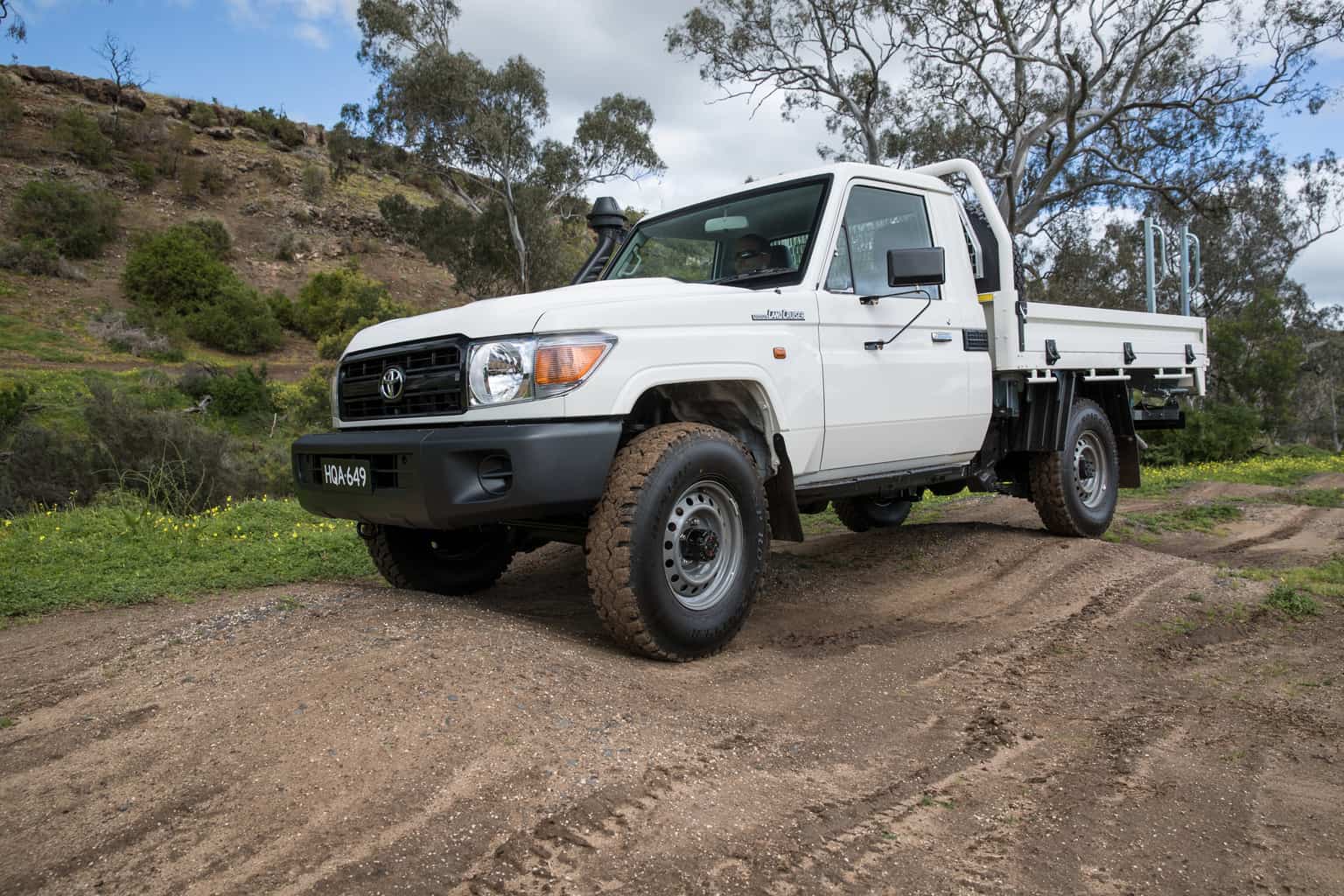Toyota Landcruiser 70 series
Toyota has overhauled the LandCruiser 70 Series to bring the workhorse utility range up to date and keep it on the shortlist of buyers who value the unique combination of V8 diesel engine muscle, outstanding off-road capability, 3500kg towing capacity and solid payload in both the single cab chassis (up to 1235kg) and the double cab (up to 1125kg) – both of which can be easily fitted out to suit various trades.
Far more more than a tweak here and there, the new 70 Series has benefited from a five-year full-scale re-engineering program that was undertaken in Australia by local and Japanese engineers and was designed to keep the range viable in the marketplace for years to come. The alternative was to the drop the vehicle altogether from Toyota’s range.
ADVERTISEMENT
The single cab benefits most as it lifts its crash-test rating under the independent ANCAP regime from three stars to the maximum five, thanks to sweeping changes that include a bigger, stronger and more rigid ladder frame (including thicker side rails and now seven cross-members), revised body panels, redesigned front seats, front seatbelt pre-tensioners, three additional airbags (side curtains and protection for the driver’s knee adding to the dual front airbags), under-dash padding and a host of new electronic safety systems.
On the latter, which also extends to other 70 Series variants, Toyota has finally introduced electronic stability and traction control, along with hill-start assist, brake assist and electronic brake-force distribution (in addition to the existing ABS brakes).
The suspension has been recalibrated to match the new frame, with the combination said to have improved handing and refinement as well as safety. The steering linkage has also been moved behind the front axle for extra protection for the occupants, forcing the adoption of a single 130-litre fuel tank, although Toyota emphasises that improved fuel economy has helped offset the reduced tank capacity.
To that end, the 4.5-litre turbo-diesel V8 – good for 151kW of power at 3400rpm and 430Nm of torque from 1200-3200rpm – picks up a particulate filter (part of the move to Euro 5 emissions compliance in Australia) and piezo-electric injectors, while the five-speed manual gearbox’s gearing is taller in second and fifth.
Toyota says the combined effect is reduced consumption – down by 10.1 per cent to 10.7L/100km – and lower emissions, as well as improved responsiveness at low engine speeds and more relaxed driving on the highway. The addition of cruise control to the standard equipment list will also make things more comfortable on the open road.
Among other changes, the split-rim steel wheels on the entry WorkMate model grade have gone, replaced by a wider single-piece 16-inch design – matched for the first time to tubeless tyres (225/95 16C). Auto-locking front hubs (with a manual ‘lock’ function) now feature across the range, and a new bank of 10 fuses allows for safer and easier connection of accessories – an important consideration for tradespeople.
Pricing has risen $5000 for the single cab and $3000 for dual cab variants, which looks modest considering the engineering overhaul. The single cab starts at $62,490 for the WorkMate, with GX adding $2000 and GXL positioned a further $2000 upstream at $66,490 plus on-road costs.
The double cab is available in WorkMate and GXL grades, priced from $64,990 and $68,990 respectively.
Air-conditioning is a $2761 option, premium paint adds $500, diff locks are $1500 for single cab GX and double cab WorkMate, and a broad range of accessories are available to suit specific industries, trades and applications. New steel and alloy tray options are also now available on single and dual cab chassis variants.
-
ADVERTISEMENT
-
ADVERTISEMENT


